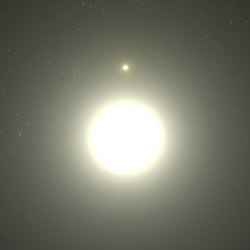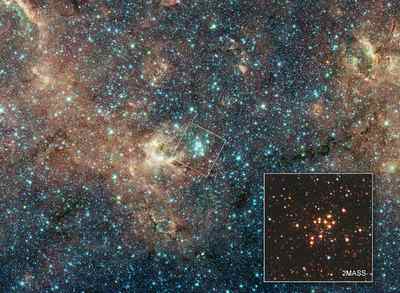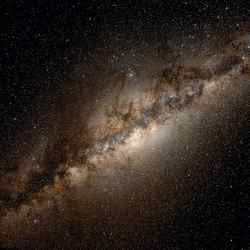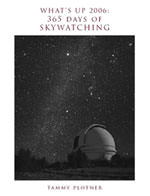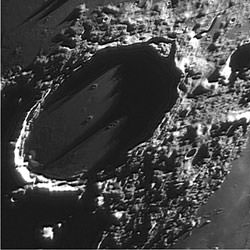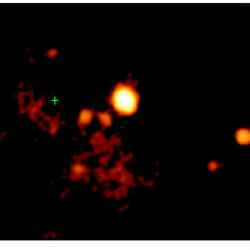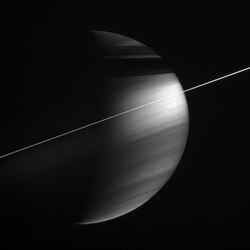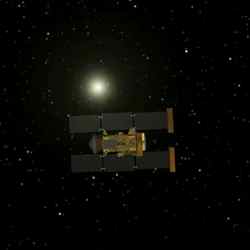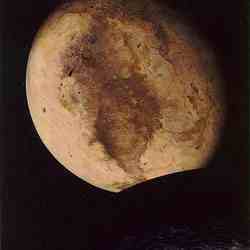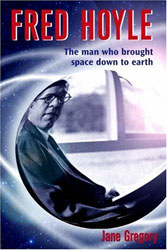
Fred Hoyle was a north country Yorkshire man who grew up independent of teachers and tutors. In following his own interests rather than a legislated curriculum, he happily ambled about his home turf until he got a taste of science and decided that’s where his future lay. With dedicated application, he did well enough at national and university tests to garner scholarships and eventually become a contributing member of Cambridge’s faculty. There, he entered into the developing field of cosmology and stayed with it for the remainder of his life. He contributed to the ideas of accretion and nucleosynthesis and maintained a lively debate on whether the universe was evolutionary or in steady state. As well, he practised his skills at public dissertations by publishing many science fiction books, speaking on radio and even writing operas. An ensuing shower of awards speaks to the appreciation many people had for his efforts, but some of his more pointed ideas kept a few of Hoyle’s peers at a distance.
This biography by Jane Gregory concentrates more on what Fred Hoyle did rather than who he was. There’s not much describing Hoyle’s early life or his non-academic activities. Rather, Gregory works through correspondence leading up to and following definite accomplishments. The information in the book is soundly based upon well referenced documentation, and in so doing, Gregory replays many of Hoyle’s controversies. For example, there’s Hoyle’s disparaging thoughts about the process of guarded peer reviews. A number of times his requests for publication were rejected. Also, there’s the emotional debate Hoyle had with Martin Ryle regarding whether the universe is in a steady state or is evolutionary. Gregory also includes many brief reviews of Hoyle’s fictional works which all seem to have sentient beings arrive on Earth from elsewhere in the universe. There subsequent purpose is to undertake some nefarious action that only a scientist can resolve. With Gregory’s thoroughly quoted compilation, the reader can easily appreciate the volume and strength of Hoyle’s work.
The challenge with Gregory’s book is that it doesn’t actually address any one particular aspect of Hoyle’s life. There’s much on the science, whether nuclear physics, radar or cosmology, but not really enough to understand the implications of Hoyle’s work in the general scientific community. There’s a large number of notes regarding politics in science, especially with building an institute at Cambridge, constructing a telescope in Australia and considering the role of an Astronomer Royal. But, there’s not enough to understand the nature of developing scientific policy nor how Hoyle coped. There simply is not enough describing Hoyle’s non-academic life to fully appreciate who this person was and why they were driven to do what they did. Rather than taking one of these paths and doing it justice, Gregory presents all through copious direct and in-direct references. This then leaves the reader to come to their own conclusion concerning Fred Hoyle.
Though this general lack of direction is bothersome, the solid reference sheds excellent light on some of Hoyle’s more questionable actions. Gregory provides a fair and unopinionated review regarding Hoyle’s concern with Jocelyn Bell and the awarding of a Nobel prize for radioastrophysics. She provides an equally fair presentation of Hoyle’s interest in panspermia and the archaeopteryx fossil. The inclusion of comments from colleagues and peers is particularly rewarding and could have been amplified to provide a more sound idea of Hoyle’s dedication to his personal interests and the type of person he was. By doing so, the reader would feel as if they had visited with Hoyle himself rather than have simply read about his accomplishments.
Only a well aimed paw of a bear will stop a fish from making its safe migratory journey up river. This dedication and passion to travel against the current is reflected in the actions of some driven people. Jane Gregory in her book Fred Hoyle’s Universe brings forward the account of Fred Hoyle and shows how this theoretical astronomer made many lasting and sometimes unexpected contributions to our collective knowledge. After all, remaining safely ensconced in established perceptions is not going to teach anyone anything.
Review by Mark Mortimer
Read more reviews online, or purchase a copy from Amazon.com.

